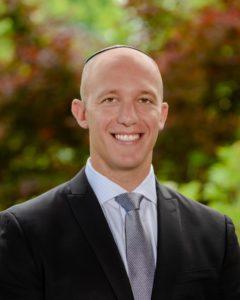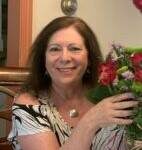
Rabbi Jason Bonder
Sukkot
If you built a sukkah this year, odds are that an elephant was not on your materials list. Furthermore, when you chose where to place your sukkah, the back of a camel likely wasn’t your first choice.
Nevertheless, in Tractate Sukkah of the Babylonian Talmud, elephants and camels are, indeed, in the discussion about constructing your sukkah. An elephant can function as a permissible wall so long as the animal cannot walk away, and the back of a camel is, theoretically, an acceptable place to build your sukkah.
A discussion about elephants and camels reminds us that not everyone sees the world like we do. When I hear the Hebrew word “sukkah,” I think of a temporary hut with walls made from either wood or some type of canvas. I also naturally imagine this sukkah in one of three places: the grass in a backyard, the deck in a backyard or somewhere on a synagogue’s property.
If you were to ask me to think outside the box for a sukkah location, my mind may have jumped to the sukkot that pop up on city streets of Philadelphia or New York, but my mind would never have made the leap to the back of a camel had I not read it in the Talmud.
The Talmud reminds us that much of what we understand to be a standard sukkah does not come from the Torah itself but rather from later interpretation of the Biblical text. We learn in Leviticus 23:42, “You shall live in sukkot seven days; all citizens in Israel shall live in sukkot.”
I am purposely using the word “sukkot” here in this English translation because an attempt to translate the Hebrew word “sukkot” with words like “booths” or “huts” already places new meaning onto that key word in the verse. Any English word would begin to shape the imagery of “sukkot” in our minds. It is remarkable that much of the Jewish world builds a sukkah in similar ways given how vague the Torah is regarding the construction of these booths.
Elephants and camels are not the only reminders that much of our thoughts are based on assumptions. It was only a few years ago now, that if you said you attended synagogue services this past Shabbat, I could reasonably assume that you left your home and physically went to the synagogue. In today’s world, it could very well mean that you attended services virtually from the comfort of your couch.
Times are changing. And just as the word “sukkah” can be understood in all kinds of ways, the same is true for the words “Jewish community.” Young Jewish people are showing us that there are all different ways to plug into Jewish wisdom. But the holiday of Sukkot gives me great hope and inspiration in facing these rapidly changing times.
While the Talmud allows for fantastical diversity regarding how the sukkah is built, one thing is far less negotiable. The sukkah must be impermanent. The sukkah is nimble, adaptable and, despite dismantling the sukkah each year, the holiday of Sukkot endures.
We can learn a thing or two from the huts that we build. Becoming nimbler, opening our hearts to different understandings of Jewish practice and leveraging technology are all ways to keep Judaism alive and relevant in this day and age.
Many of us may have a similar idea or image in our minds of what “Jewish” looks like, yet the holiday of Sukkot and that conversation in Tractate Sukkah helps us to expand our understanding. The holiday reminds us that adapting to modern times won’t destroy Jewish tradition and practice. Rather, it will open new pathways toward vibrant Jewish community.
On this Sukkot, I am not rushing to find an elephant or a camel for my sukkah. I am, however, inspired to think about ways that we as Jews can learn from one another and develop a greater understanding of how each of us imagines our Jewish lives, Jewish practice and Jewish identity.
Learning from each other can help us evolve to meet the ever-changing needs of the Jewish people.
Rabbi Jason Bonder is the associate rabbi at Congregation Beth Or in Maple Glen. The Board of Rabbis of Greater Philadelphia is proud to provide diverse perspectives on Torah commentary for the Jewish Exponent. The opinions expressed in this column are the author’s own and do not necessarily reflect the view of the Board of Rabbis.





